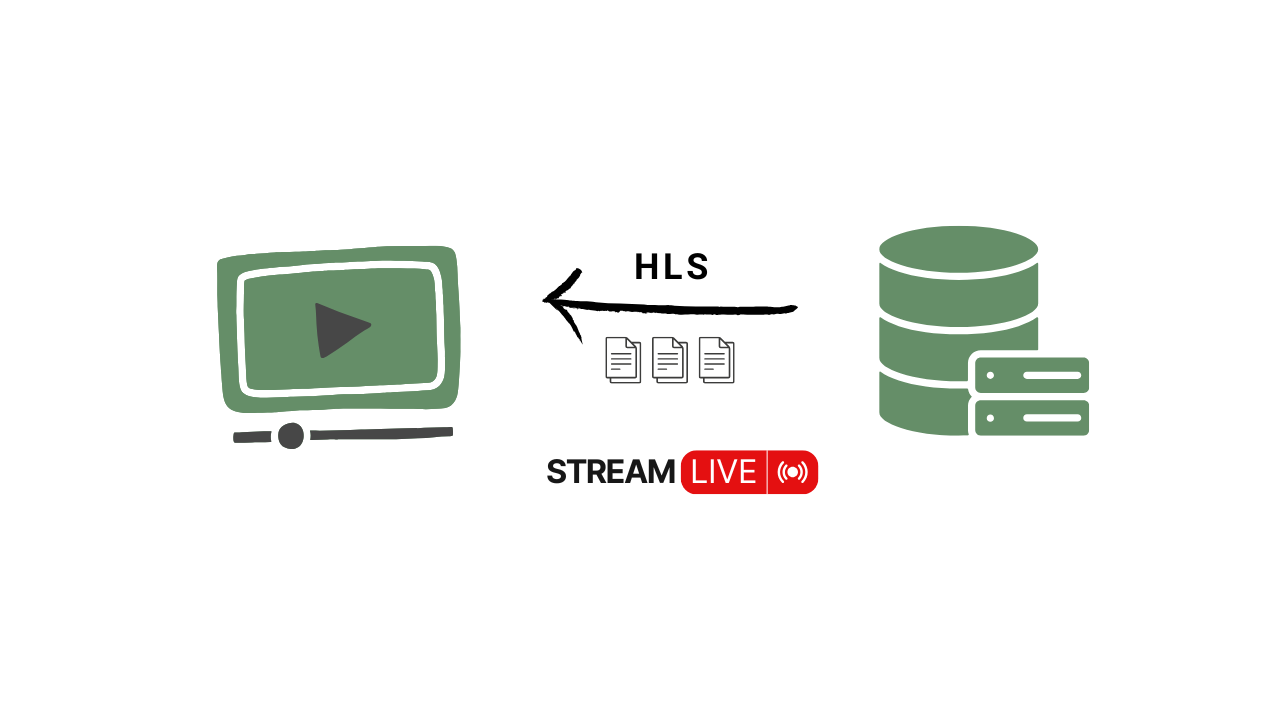HLS Demystified: An In-Depth Look at HTTP Live Streaming
 Md Mafiz Uddin
Md Mafiz Uddin
HTTP Live Streaming (HLS) has transformed video delivery, enabling smooth, adaptable playback across diverse devices and network conditions. Created by Apple, this powerful protocol allows users to experience video without buffering, regardless of device or internet quality, making it a go-to solution for online video streaming. In this guide, we’ll break down what HLS is, how it works, and the technical foundations that make it so effective.
Table of Contents
What is HLS?
HTTP Live Streaming (HLS) is a video streaming protocol used to transfer media over the internet by breaking content into small, sequential chunks. It enables video content to adapt seamlessly to changing network speeds by offering different quality levels that can adjust dynamically during playback.
Contrary to what its name suggests, HLS is not limited to live content—it's commonly used for on-demand videos as well. The technology behind HLS allows for a continuous and high-quality experience across all devices, whether it’s a smartphone, laptop, or television.
How Does HLS Work?
An HLS stream originates from a server where (in on-demand streaming) the media file is stored, or where (in live streaming) the stream is created. Because HLS is based on HTTP, any ordinary web server can originate the stream.
HLS achieves smooth playback and adaptive quality by dividing the video into smaller parts called segments or chunks. These chunks are generally between 2-10 seconds each and are stored as individual files on the server. Here’s an overview of how it works:
Encoding and Segmenting: The original video file is encoded at multiple bitrates and resolutions. Each version is then segmented into smaller parts, which makes it easier to handle the video in short, digestible pieces.
Playlist Files (Manifests): HLS uses
.m3u8files (known as playlists or manifests) to keep track of these segments. The playlists direct the player on which segments to download and in what order. Two types of playlists are commonly used:Master Playlist: Points to various quality levels available for playback.
Variant Playlists: Each points to chunks of a specific quality level.
Dynamic Quality Selection: As the viewer’s device streams the video, the player continuously assesses the available network bandwidth and chooses the optimal quality level for that moment.
HTTP Delivery: Since HLS segments are delivered over HTTP, they are compatible with Content Delivery Networks (CDNs), which helps scale the delivery to global audiences.
HLS Components and Process Flow
To fully grasp how HLS operates, let’s break down the key components and the process flow.
1. Encoding Multiple Qualities
Encoding is the first step in HLS. The original video is converted into several versions at varying resolutions and bitrates (e.g., 240p at 300kbps, 480p at 800kbps, 720p at 1500kbps). This encoding process creates multiple versions suited for different network conditions.
2. Segmenting the Video
The encoded video is split into shorter segments. For instance, a 10-minute video could be divided into 5-second chunks. This segmentation is key to achieving adaptive bitrate streaming.
3. Playlist (Manifest) Files
The playlist files organize the segments and provide instructions to the player:
The Master Playlist (
master.m3u8) contains links to each quality level.The Variant Playlist (
playlist.m3u8) lists the specific segments for a particular quality level. Each variant playlist contains URLs for the individual video chunks.
4. Adaptive Streaming Process
When a user initiates playback, the player downloads the master playlist to access all available quality levels and chooses a variant playlist based on network speed. If the connection weakens, the player switches to a lower-quality variant playlist seamlessly.
5. Delivery Over HTTP
Each chunk is delivered over standard HTTP, which ensures compatibility with CDN caching for scalability and improved performance.
Adaptive Bitrate Streaming Explained
Adaptive Bitrate Streaming (ABR) is a core feature of HLS. The player continuously monitors network conditions and device capabilities, allowing it to switch between quality levels in real-time. Let’s break down how ABR works in a live scenario:
Initial Playback: When playback begins, the player selects a quality level that matches the current network speed.
Network Changes: If the connection speed drops, the player switches to a lower bitrate (e.g., from 720p to 480p) to maintain smooth playback.
Quality Restoration: As the connection improves, the player reverts to a higher-quality version.
ABR makes it possible for viewers to watch content without needing to manually adjust quality, enhancing the overall experience.
Benefits of HLS
Broad Compatibility: HLS works across major operating systems, including iOS, Android, and most browsers, thanks to its reliance on HTTP.
Adaptive Streaming: HLS adjusts video quality dynamically, ideal for mobile users and others on variable connections.
Scalability with HTTP and CDNs: Since HLS uses HTTP, it scales easily using CDN caching, allowing providers to deliver video to global audiences with reduced latency.
Security: HLS supports encryption and secure streaming through HTTPS, making it more secure than older protocols.
Comparing HLS to Other Protocols
HLS vs. MPEG-DASH
Compatibility: HLS has broader support on Apple devices, while MPEG-DASH is codec-agnostic and works better in some modern, cross-platform environments.
Flexibility: MPEG-DASH allows for a wider range of codecs, while HLS often relies on H.264.
HLS vs. RTMP
Scalability: RTMP is an older protocol, and its reliance on Flash makes it less suitable for modern use. HLS’s compatibility with HTTP/CDNs makes it far more scalable.
Latency: RTMP has lower latency than HLS, which can be beneficial in some real-time applications.
Real-World Use Cases for HLS
Live Sports: Real-time, adaptive video for viewers on mobile networks.
News Broadcasting: HLS ensures reliable playback on any device.
Education: Adaptive bitrate keeps online classes smooth and accessible to students on varied connections.
The Future of HLS
As internet access improves and streaming becomes increasingly central to online experiences, protocols like HLS will continue to adapt and expand. Emerging features, such as Low-Latency HLS (LL-HLS), are reducing delays, further enhancing HLS’s applicability for live and interactive content.
In short, HLS is one of the most powerful tools for delivering adaptive, scalable, and high-quality video. Its HTTP-based delivery, combined with adaptive bitrate streaming, makes it ideal for a wide range of applications, from entertainment to education. By demystifying the inner workings of HLS, we gain a deeper appreciation for how this technology enhances our everyday streaming experiences.
Before We End...
That's all for now. I hope you've found this helpful
:) Happy streaming!
Regards: Md Mafizuddin
For any queries connect with me: LinkedIn: @mdmafizuddin Twitter: @whyknowmee Github: @pacehut Instagram: @mafiz._
Subscribe to my newsletter
Read articles from Md Mafiz Uddin directly inside your inbox. Subscribe to the newsletter, and don't miss out.
Written by
